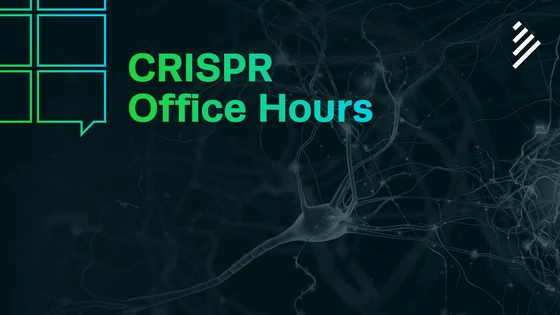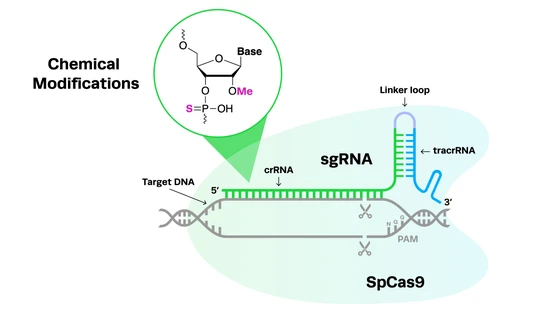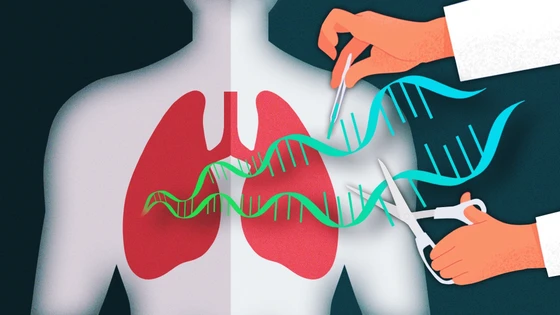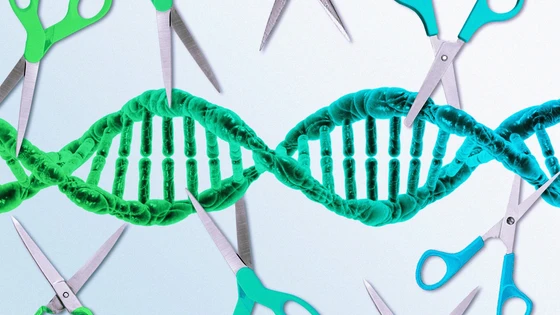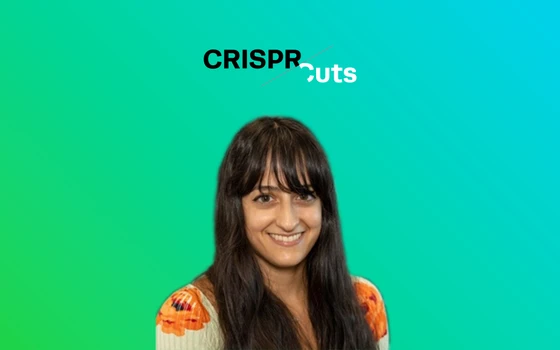Contents
In the latest CRISPR Office hours, we were joined by Martin Kampmann, an Associate Professor at UCSF’s Institute for Neurodegenerative Diseases. His lab develops and uses innovative CRISPR-based functional genomics, such as CRISPRi/a, to understand the cellular and molecular mechanisms of human neurodegenerative and neuropsychiatric diseases, and identify new therapeutic strategies.
Martin discussed the recent launch of CRISPRbrain, an online data commons for functional genomics screens in differentiated human cell types, such as iPSC-based models of brain disease. In addition, he also spoke about leveraging his lab’s expertise towards COVID-19 research.
Watch the recording here, or jump down and read the summary — the choice is yours!
Functional Genomics Helps Bridge The Gap Between GWAS Studies And Functional Studies
Martin started off by explaining the need for functional genomics. In this era of biomedical research, the next-generation sequencing capacity is so high that we can now do human genetics at a genome-wide scale. The results we get from these studies are genetic variations across the genome that associate with different diseases or traits of interest. While we have a growing catalog of these, the next challenge is in understanding how they actually work—what does it mean that a specific SNP gives you a higher risk of a disease, how does it act, in which cells, when in a person’s lifetime, and then how can we use that understanding to design therapeutic strategies. To answer these questions we need functional genomics.
Martin discussed a review by Alice Chen-Plotkin’s lab that emphasizes the problem. From these data, it was clear that over the last ten years, the number of GWAS studies increased steadily and rapidly, however, the number of functional studies remained almost constant. The graph showed that there was a huge lag in terms of understanding the functional importance of these GWAS hits that come from human genomics. This is a problem that Martin’s team, among many others, is hoping to solve. They want to bridge the gap by using functional genomics. Functional genomics provides a way to really understand the implications that specific genes have in cells. In recent years, CRISPR has been incredibly transformative and has played a crucial role in querying gene functions in cells.
CRISPR-Based Gene Perturbation Methods
Martin also discussed the various ways in which CRISPR can be used in functional studies. The most well-known application of CRISPR is to inactivate a gene to understand its function i.e. gene knockout. Knockouts also enable modeling these disease variants that come from GWAS studies to make isogenic cell lines in order to understand how one base change in the genome could lead to a cellular defect.
The other two applications of CRISPR that are slowly gaining popularity are CRISPRa and CRISPRi. CRISPRa, also known as CRISPR activation is used to activate a specific gene, whereas CRISPRi or CRISPR interference can be used to repress a gene. Martin also discussed the circumstances in which a CRISPRa screen would be preferred over a CRISPRi screen.
Importance Of CRISPR Screens In Functional Genomics
In functional genomics, scientists like to do genome-wide screens instead of perturbing one gene at a time. Libraries of gRNAs can be used to target all protein-coding genes in humans or only the druggable genome. In a typical application, lentiviral libraries are used to deliver them to cells in order to look at the impact on genotypes of interest.
Martin also explained when an arrayed screen would be a better option compared to a pooled screen. Pooled screens are very scalable and fast so in their lab, they often try to use pooled screens when possible, if it can be used to provide an answer to the biological question posed. An arrayed screen would be used as a secondary screen to have an in-depth characterization of each gene perturbation one at a time.
Functional Genomics of Brain Disease and COVID-19 Research
CRISPR screens were most commonly used in cancer cell lines and transformed cell lines but not in differentiated human cell types that are not cancerous. So in Martin’s lab, they were very motivated to establish CRISPR screening technologies in iPSC-derived differentiated cell types that could be used to study diseases other than cancer such as brain disease. They used CRISPRi technology to screen iPSC-derived neurons.
Martin also discussed why their technology was better than some of the previously used technologies such as RNAi. Prior to CRISPR, RNAi was the method of choice to do functional genomics in human cells. While you can get a good knockdown with RNAi, there are off-target effects that are really pervasive. This is due to the fact that in RNAi, you only need a perfect match in the seed region to affect the expression of the gene. Martin also spoke about the example where four different groups did an RNAi screen for HIV host factors and there was almost no overlap in hits, highlighting the fact that RNAi screens are tricky. While it’s not impossible to work around these off-target effects, once CRISPR screens became available, and had minimum off-target effects, it became clear that it was very superior to RNAi in functional genomics studies.
As they started making large scale data sets from different human cell types, Martin and his team decided that they wanted to share this with the community and also provide a platform where others could contribute their data. With this in mind, they recently launched CRISPRbrain in collaboration with another lab- Data Tecnica International.
Martin also discussed the COVID-19 research his lab was involved with, in collaboration with scientists such as Nevan Krogan, Jim Wells, Bruce Conklin, as well as Kevin Holden & Jared Carlson-Stevermer from Synthego. They focused on important readouts from COVID-19 that they could look at in their lab and one of them was the binding of the spike protein to cells to understand how it works.
Free CRISPR Consultation
Want to know how to optimize your CRISPR experiment to get guaranteed editing results? Schedule a free discovery call and project consultation with a genome engineering expert.

